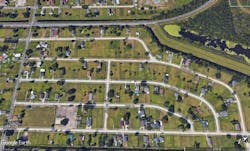St. Bernard Parish Combats Brain-Eating Amoeba
Mueller Water Products, www.muellerwp.com, 770.206.4200
St. Bernard Parish is situated southeast of New Orleans in the state of Louisiana. Following Hurricane Katrina, its population shrank from 67,000 to 45,000, resulting in dispersed redevelopment that requires closer monitoring of water quality. When the Department of Health & Hospitals (DHH) notified the water department there had been two deaths related to Naegleria Fowleri, colloquially known as the “brain-eating amoeba” in St. Bernard Parish, Jacob Groby, quality control superintendent for the parish stepped into action.
The parish determined its sampling protocols no longer were adequate as some areas reported lower than acceptable levels of CL2 and higher levels of Nh3, which can be conducive to bio-film growth. Testing for Naegleria Fowleri requires analysis in specialized labs such as the Center for Disease Control (CDC) and Biological Consultants Services.
Additionally, the parish tests low population sections for total chlorine, mono-chlorine, free ammonia, nitrite, pH, dissolved oxygen and temperature using a Hach SL-1000 portable parallel analyzer. Additionally, each sample is tested for adenosine triphosphate (ATP) levels.
“We had to rethink the age and time of water in our system,” Groby said. “So the only logical way to do that is to cause the water to move through the system, identifying the point before we lose the chlorine residual which causes an increase in nitrification levels which is favorable for bacteria.”
The parish installed 50 Hydro-Guard TAPS flushing stations with a custom 50-mm (2-in.) Singer valve to optimize the flushing process for the pipe size, providing the correct velocity to pull fresh water into each zone. Coupled with the pressure sustaining feature, this scoured and cleaned the pipes, reducing corrosion and improving water quality.
Due to the depopulation, the distribution system had too much water to turn over in 24 hours as it did pre-Katrina. With dispersed redevelopment, it could not turn off sections of the system, rather it needed to determine where the water flows and how fast it takes to get there to affect a flow pattern change. It developed a water demand model to fine tune flushing times, and daily data is compared with historical data to optimize decision making. When chlorine falls, nitrates rise or ATP levels are off, it triggers automatic flushing or heightened testing.
The flush cycle creates a wave action to force flush 27 miles of the distribution system as needed. With regulated flush cycles and velocity at each installation point, fresh water is drawn into areas where water quality falls below acceptable levels.
“By using these automated flushing units, we have been able to use our greatly reduced personnel in a more efficient manner and save on our limited utility resources,” Groby added. “All southern water systems that experience high temperatures (more than 72ºF) need to be aware that they should be routinely flushing their water systems and using the new testing tools for all water quality indicators to ensure a consistent level of protection and maintain fresher water,” Groby said.
